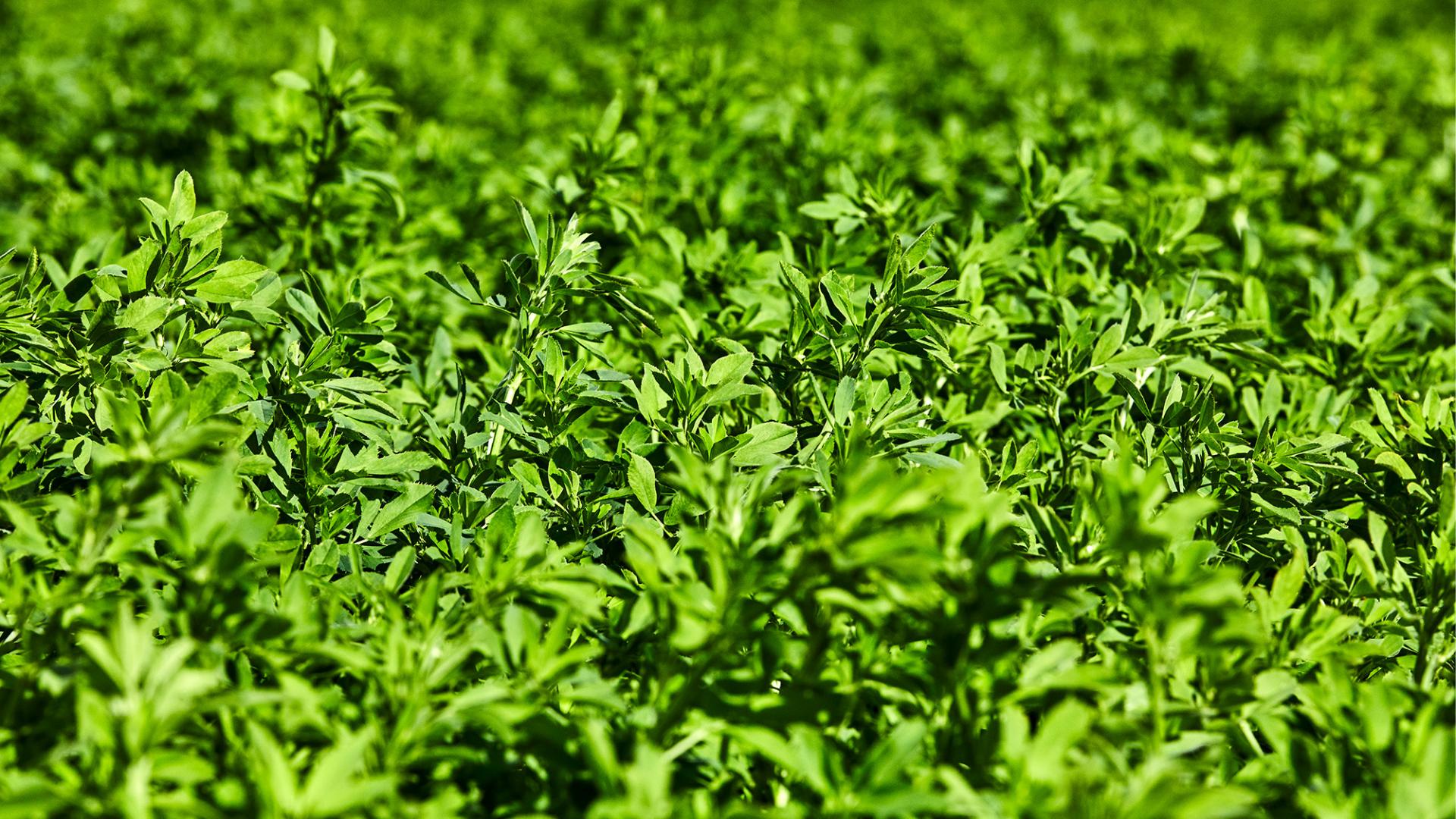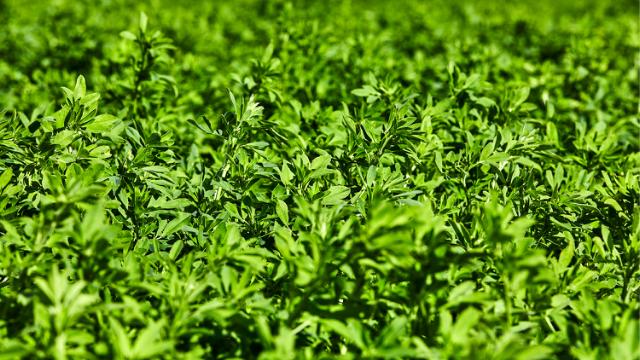Increase farm profitability with DLF alfalfa
Farms that rely on protein-rich feed can become much more self-sufficient by growing alfalfa. Sowing a field of alfalfa helps cut the input costs, protects against fluctuations in protein prices, raise farm yields, and improve farm finances

Having many benefits, DLF Alfalfa makes a good business case for you and for your customers. It has a high nutritional value and it thrives on well-drained soils with adequate levels of pH, potassium (K) and phosphorus (P). With its long deep tap root system, alfalfa also withstands severe drought.
Alfalfa is a productive plant, with early spring growth and rapid regrowth after cutting. Farmers can ensile their crop or store it as hay. Another option is to artificially dry alfalfa for converting it into pellets.
More protein per hectare
A field containing forage grasses and DLF Alfalfa produces more protein per hectare than a field of forage grass, maize silage or soybean. Through our extensive, state-of-the-art breeding programme we focus on developing alfalfa varieties that excel in their yield, protein content, disease tolerance and standability.
Alfalfa is also good for soil structure, and it provides symbiotic nitrogen fixation. The nitrogen is not just good for the alfalfa plants. Fixation supports surrounding forage grasses and improves the yield from subsequent crops by up to 5%. Better still, the deep rooting system helps farmers maintain or even increase feed production during dry seasons.
DLF Alfalfa is a locally produced protein source with good nutritional value and a high output, generated from low input. We test DLF Alfalfa in a variety of environments to ensure that the benefits of any given variety are applicable to a wide range of markets.
To summarise, DLF Alfalfa saves farmers money, improves their milk and meat production and requires less input.

Did you know?
- Different alfalfas fit different climatic conditions. The main types are:
- Dormant Flemish alfalfa types (dormancy < 5)
- Non-dormant alfalfa types (dormancy > 5)
- Dormant varieties are very winter hardy, whereas non-dormant alfalfas are more suitable for long growing seasons and mild winters.
- There are also alfalfa varieties adapted for grazing.
- Alfalfa feed insects and provides shelter for chicks and smaller animals. Try letting a corner or strip of alfalfa field go untouched and observe bird, insects and wildlife blossom.
DLF Alfalfa is good all round
Extremely drought-tolerant
Deep roots make alfalfa extremely drought-tolerant than other forage crops. During dry periods in temperate regions, alfalfa continues to grow and to provide a secure feed supply.
No nitrogen fertiliser needed
A field of alfalfa is entirely self-sufficient in nitrogen. You do not have to add any nitrogen because the alfalfa fixes more nitrogen than it needs. In areas where alfalfa has never been grown or not grown within the last 5 years, it's necessary to inoculate the seed with Rhizobium bacteria.. Rather than doing it manually at the time of sowing, DLF is proposing a pre-inoculation of the seed with Rhizobium bacteria.
Fast establishment
The need for weed control in a well-established field of alfalfa is minimal. DLF Alfalfa establishes faster than the weeds, which reduces the need for chemicals and makes for a more environmentally friendly farm.
High nutrient value
Beef cattle thrive on alfalfa. Alfalfa has a high content of essential fibres, tannins, essential amino acids, microelements and vitamins, which produces more tender meat.
A good storage feed
Alfalfa is good for silage, for wrapping, and for producing high-quality hay from only a few cuts each season. When cut, alfalfa dries fast, and offers a high dry-matter yield with a high protein content.